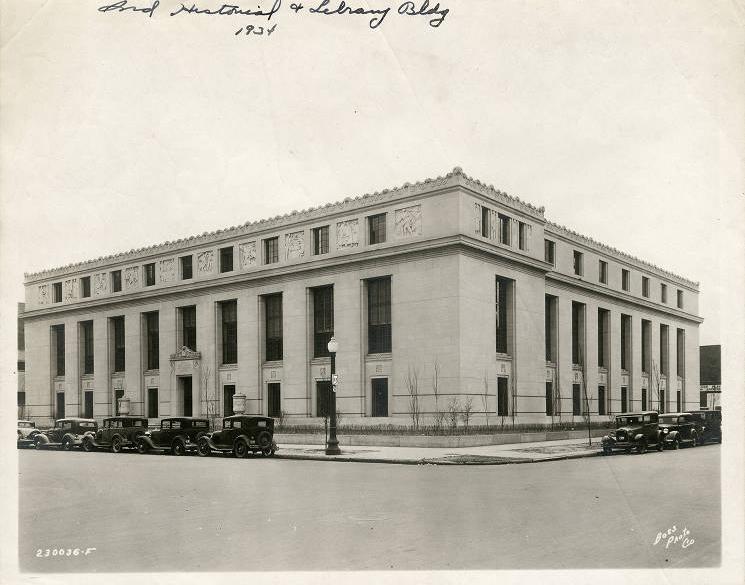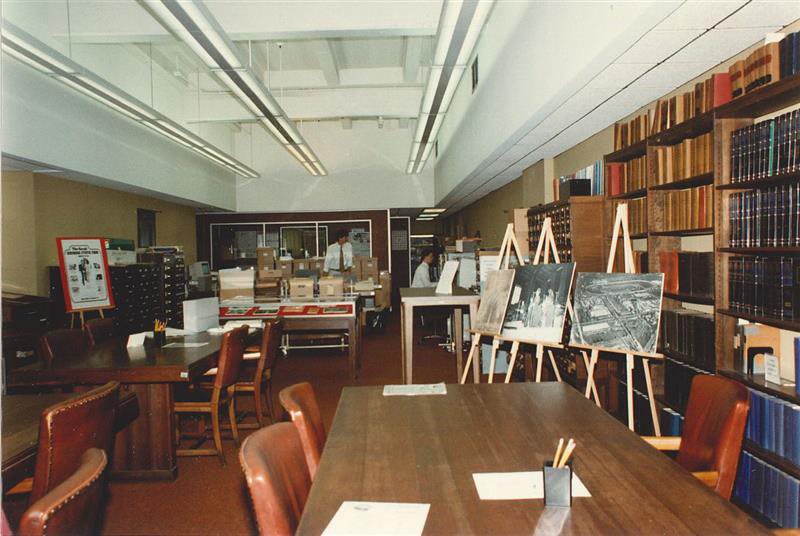The Indiana State Archives is a division of the Indiana Archives and Records Administration (IARA). While the collection policies and contents of state archives nationwide often differ, the Indiana State Archives’ collection is comprised of documents created by state government officials and agencies. The State Archives is not only the repository for these documents, but also performs actions that organize, describe, and preserve the documents.

Since territorial times, officials kept records documenting the governmental functions of Indiana. Originally, each government office was responsible for the storage and maintenance of the records they generated. Over time, this method became impractical, and plans were made to institute a state archival system starting in 1906. In 1913, Governor Samuel Ralston signed an act that created the Division of Indiana History and Archives under the Indiana State Library to take control of state government documents with enduring legal, historical, or administrative value. At this time, the State Library occupied space in the Indiana State House with limited room for expansion. The State Archives moved into the Indiana State Library and Historical Building when it opened in 1934.
Earlham College professor Harlow Lindley was the founding director of the Indiana State Archives, albeit in a part-time role, and served from 1907-1923. In 1913, Esther McNitt became the first full-time paid Indiana state archivist. Her tenure ran from 1913-1933. After McNitt, several state archivists had brief tenures until Margaret Pierson, who served from 1942-1968, and John Newman, who served from 1970-1986.

In 1979, the Indiana General Assembly created the Indiana Commission on Public Records to oversee the lifecycle of state records through their creation, use, and final disposition, whether destruction or transfer to the State Archives as permanent records. Then, as today, the size and complexity of state and local government presented concerns regarding the efficiency of managing records and information resources. Forms management was among the principal statutory duties of the Commission on Public Records as state officials tried to control waste at the point of a record’s creation. In addition to the State Archives and forms management, the Commission’s other legal duties included a records and information management unit, a micrographics lab, a records storage center, and a document preservation lab.
During the 1990s, much of the archival collection was stored in the basement of the State Library and Historical Building. Severe flooding damaged some of the records. State officials decided to move the Indiana State Archives, in part to renovate the building. In 2001, the State Archives moved to a state-owned warehouse, that formerly housed an RCA record stamping plant in the Shadeland Avenue industrial corridor. Amid a building boom that produced a new , the building, and a renovation to the State Library and Historical Building, many believed the State Archives would get a new facility too. However, the state’s significant operating deficit of 2003 and the subsequent Great Recession effectively shelved any serious discussions of another construction project.

In 2021, surging state revenues from income and sales taxes and federal COVID-19 stimulus aid presented an opportunity for Governor Eric Holcomb and state lawmakers to pay in full for several one-time capital projects, including the State Archives. After considering several state-owned properties, the Indiana Department of Administration selected an undeveloped site on the state government campus along the walk. In 2023, construction began on the $105 million state-of-the-art archival building. State Archives staff worked with architects from RATIO Associates and engineers to plan for a facility that provides stable temperature and humidity controls, which are vital to the long-term preservation of documents. The new building will also consolidate most IARA functions and staff under one roof. The location will also return the State Archives to close proximity with other heritage cultural partners in downtown Indianapolis.
The State Archives houses 133,000 boxes of historical records. IARA works with state, county, and municipal governments and institutions to maintain the collection. Among the noteworthy holdings are Indiana’s constitutions, the governors’ papers, bills of the Indiana General Assembly, Indiana Supreme Court case files, military discharge records, naturalization records, and institutional records (including the prison records of and ). The State Archives contains materials to fill a myriad of research interests whether they be historical or genealogical.

Help improve this entry
Contribute information, offer corrections, suggest images.
You can also recommend new entries related to this topic.